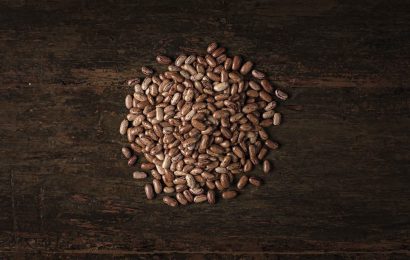Chef Max Jaques writes about Sertanejo’s Day (to celebrate the ones who were born or live in sertão) and this regional food
The cuisine is an alive and essential characteristic of any people. Hundreds of authors have been writing about this subject for centuries, especially in the last decades, when ultraprocessed food has been growing increasingly popular, scaring us and calling us to action. We are trying to answer how we can make sure that our people have means to eat healthily in the different realities and environments that Brazil has. To celebrate Sertanejo’s Day, I decided to talk about the food from Sertão (Brazil’s backlands).
What we know today as Brazilian cuisine is a result of a migration process that has been intensified since the 16th Century. The union of indigenous people knowledge and African people knowledge, both facing European colonization, marks the painful mixture that creates our cuisine. From this rowdy process of conquering land emerges our national cuisine, that is alive and changing in front of new migration movements.
Before I start to talk about the food from the backlands, I need to point out that if today we have fast ways to transport food and refrigeration technologies this was not the reality some decades ago. And is still not the reality in some parts of the country. We need to remember that the Portuguese people colonized Brazil starting from the coast and that it was the bandeirantes (land explorers), in the 16th Century, that started the mission of “discovering” the lands inside Brazil, the sertão.
I put the verb discover in inverted commas because in some way the bandeirantes also invented Brazil’s countryside. Going west, they formed what is now known as this cultural territory. They brought pigs and chickens and planted corn, which helped to create the cuisine from sertão.
Câmara Cascudo, in his book História da Alimentação no Brasil, points that close to the coast, fish and manioc were more common and in the countryside the staple food were corn and pork. It is easy to understand: manioc takes a year to be harvested and corn takes less than half of this time. Pig is a versatile animal, eats fruits and whatever food is available. From the pig is possible to use the meat and the fat, that enriched the preparations and helped to conserve the meat. Ancestral technologies that were complemented by salting processes to make jerked beef, transported with the provisions. And there were also a variety of fruit and animals to be hunted.
Even after this exploration by the bandeirantes and the arrival of Potuguese royalty in Brazil in the 19th Century, that brought new ingredients to the country such as wheat flour, this stayed only at the coast. It was not possible to take wheat flour to the countryside because it was a long trip and the flour wouldn’t resist. For this reason, some indigenous habits were preserved, such as eating cooked or baked roots for breakfast. Without wheat flour, cakes and bread were baked using corn and manioc. The indigenous knowledge also gave us the tapioca flour and with it came lots of biscuits, porridges, pão de queijo and cornbread. The rapadura sweetened the sertanejo’s wail and over the years chibé and cachaça replaced caiuins and caxiris.
Paçocas with jerked beek, couscous variations, recipes with beans, freshwater fish, baião de dois, farofas, goat’s milk and cheeses, curd, sarapatel (pig offal stew), goat’s meat preparations, roots for breakfast with local butter, pamonhas, canjicas (hominy pudding), alfenins (sugar dough), tarecos, french toast and mushes, umbu juice and sweets and lots of other stuff were created in the backlands.
I am just listing these recipes in opposition to what we usually hear about the cuisine from sertão: that is supposedly a famine cuisine, where there is not enough food. This is a mistake, for sure.
The cuisine from sertão is as rich and important in the formation of Brazil as it is the one from the coast. Paraphrasing Euclides da Cunha in Rebellion In The Backlands, the sertanejo – as well as its cuisine – is strong.
Let’s celebrate the knowledge and the people from the backlands.



